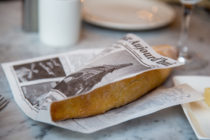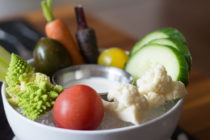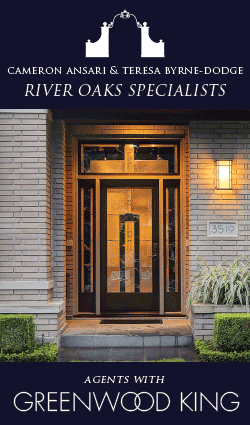There is a misconception of the traditional English afternoon tea service. Some Americans believe it to be stuffy, or without satisfaction, or simply just an hour to drink tea. Yawn. It’s none of these things.
It’s none of these things.
What’s the difference?
Afternoon tea is a social hour in the late afternoon (from 2 to 4 pm, usually) meant to be spent catching up on the latest gossip, drinking tea (if you so choose) and noshing on sandwiches and sweets. It became popular in England during the Victorian era when it was requested by the Duchess of Bedford*, who would get the early evening munchies. If dinner was set for 8 pm, afternoon tea was intended to hold you over until your next meal. It is an elegant practice featuring delicate china and ornate displays of snacks, but it isn’t meant to be too formal. In a way, it served as a prelude to happy hour.
Obviously, afternoon tea wasn’t enjoyed by the working class, because they were working. An hour or two to idle over pastries and discuss political scandals was not in the schedule of the common folk.

Tea selection at Hotel Granduca.
High tea, on the other hand, originated as the after-work tea refreshment for those in the working class. It was served around 6 pm, after laborers came home, in order to revive them after working all day long. While “high tea” sounds fancy and important, there are two different schools of thought about how it got its name. Some historians believe that “high” in the title refers to the late hour in the day in which this post-work tea was served. It was often accompanied by nourishing dishes such as stews, bread, butter and perhaps a chunk of meat. (This was later referred to as supper.)
Another idea is that the word “high” comes from the high-backed dining room chairs that commoners sat in at home while drinking their tea at the mealtime table. Those that would indulge in afternoon tea would often lounge about in cushioned parlor chairs, settees or other tufted furniture. In Scotland, high tea was more along the lines of the English afternoon tea, and today often includes a cheese tasting.
While afternoon tea was originally hosted in the homes of posh society ladies as an excuse to network and socialize (complete with hand-written invitations delivered by servants), at-home tea parties started to lose their popularity in the late 1800s when travel became popular. It was around the early 1900s that luxury hotels in Britain and elsewhere in Europe – as well as in the United States – began to offer decadent afternoon tea as a way to capture the interest of English travelers. Complete with alcohol as a way to indulge beyond pastries, these tea rooms became popular locations for tourists, wealthy locals, the signing of business deals and courtship.
Evolution of excess
After World War II, rationing meant that the English had to cut back in their tea habit. Of course, this mainly impacted the working class. Expensive and delightful afternoon tea hours offered at luxury hotels became even more elaborate and decadent, with some including aperitifs at the end of service (to ready you for dinner, naturally), Champagne, Swiss chocolates, French macaron or Italian charcuterie brought out in multiple courses served on sterling silver tiered trays and fancier than ever seen before tea sets and food displays.
Afternoon tea was now a special occasion and a competitive feature at the highest of high-end hotels like London’s Claridge’s and Ritz Carlton hotels. New York’s Russian Tea Room (which offers both royal afternoon tea for $115 and afternoon tea $85) and the Drake Hotel’s Palm Court of Chicago are where royal families choose to take their tea. Today, the Merchant Hotel in Belfast, Ireland, hosts an afternoon tea for the one-percenters. It costs up to £350 (approximately $469) and features Royal Beluga caviar, Krug Grande Cuveé Champagne and fairtrade teas.

Savory fare served at Hotel Granduca’s afternoon tea.
In Houston
If you’re interested in experiencing elegant afternoon tea in a swanky Houston hotel, you can make reservations at Hotel Granduca to have your tea served in Ristorante Cavour — or elsewhere within the hotel. Located near The Galleria in Uptown Park, Granduca offers four different teas to choose from, including a high tea, afternoon tea, and a tea hour designed for children, priced from $23 to $85 per person. It’s a less-than-every-day way to catch up with friends between meals, entertain out-of-towners, celebrate a birthday or start a new tradition.
Hotel Granduca, 1080 Uptown Park Blvd 713-418-1000 Tea is served daily, from 2 to 4 pm.
To make reservations (required) or for more information, click here.
*Tea was consumed by the Britons and French in the late afternoon long before this time, but a daily service of tea along with satisfying snacks and the inclusion of sweets, from scones to petit fours was a ritual that Anna, Duchess of Bedford, is said to have brought back into fashion. In the late 1600s and 1700s, many men and women enjoyed coffee and tea hours with each other in the afternoon, and the caffeine-dependency social practice was the setting for political discussions and deal-making.









Follow Us